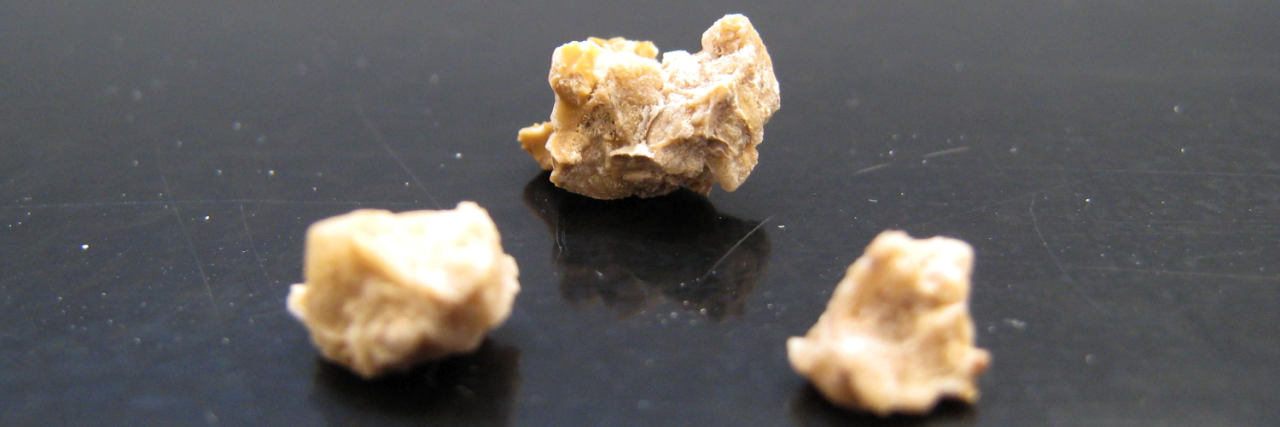We Need More Awareness About How Sepsis Affects Patients With Medullary Sponge Kidney
It seems that at least twice a year, I know of at least two or three medullary sponge kidney patients – MSKers or spongies, as we like to call ourselves – who end up in the hospital at the same time with sepsis. Sometimes it’s four to five at once. I have been there myself. While anyone can develop sepsis at any time, some MSK patients have an increased risk of developing sepsis, and that risk seems to be overlooked in some cases by doctors.
According to the Sepsis Alliance, someone dies from sepsis every two minutes in the United States, and it is the leading cause of death in hospitals. Post-sepsis syndrome occurs in up to 50 percent of sepsis survivors.
September is Sepsis Awareness Month. Considering that, I’d like to call attention to our struggle and offer some insight as to why that may be the case. To do that, I asked for help from the two biggest MSK groups on Facebook. I created a poll to try to find out how many have had sepsis. While not every member of both groups participated in the poll, the results were interesting, considering our disease is rare and often unheard of in the medical community.
281 total people participated in the poll, and I designed it to where they could only submit answers once.
263 (93.59 percent) had a definite diagnosis of MSK. Of those:
52 (19.62 percent) have had sepsis once.
25 (9.43 percent) have had sepsis more than once (answers ranged from two to six times), and two participants said they’ve had it 16 times.
36 (13.58 percent) have come close to death at least once because of sepsis.
18 people in the groups have not officially been diagnosed with MSK, but still deal with stones and infections. The results for them were:
Three people (16.67 percent) have had sepsis once and one person (5.56 percent) has come close to death because of sepsis.
I also asked the support people (those who do not have MSK or other urologic issues, but are there to support someone who does) about their instances with sepsis. The results were as follows:
15 answered the question. Out of those, three people (20 percent) have had sepsis once, and one person (6.67 percent) has come close to death at least once because of sepsis.
Of all the members who participated in the poll, 225 (80.94 percent) live in the United States, and 53 (19.06 percent) live outside the U.S. Three people declined to answer that question.
While this wasn’t an “official” medical study and these numbers are small in comparison to some studies, they speak volumes as to what we endure as a community and the hurdles we face in trying to be understood, especially in the United States, which is considered one of the most medically advanced countries in the world.
Each one of these numbers is an individual life, and the impact on those lives can be profound. Frequent UTIs, kidney and bladder infections are common with MSK. Some of us deal with interstitial cystitis or chronic cystitis as well. Quite a few of us have urine samples that rarely or never culture, and as a result, sepsis can come on quickly – sometimes within just a few hours of leaving the doctor’s office with a prescription for prophylactic antibiotics.
So, what does all of this mean for us? It means we need doctors who try to understand us and don’t just hand us countless prescriptions for oral antibiotics when we say our symptoms are persistent. We usually end up needing stronger IV antibiotics, and numerous MSKers have ended up either in the hospital for days on end or at home with PICC lines because of that. One theory is that biofilm sets up in our stones, although I don’t think that theory has been explored in depth in MSK patients because no one seems to want to really study us, and MSK is almost always excluded from any stone clinical trials.
Each oral antibiotic we take may cause the infection symptoms to decrease for a little while, but they don’t get rid of the infection. As soon as we stop taking the antibiotic, the symptoms come back with a vengeance. The more we take, the more resistant the biofilm becomes. Since there is no way to go in and remove all the stones from our kidneys and we would just make more anyway because our kidneys don’t filter properly, this is an issue we must deal with long-term.
Perhaps more of us would benefit from being referred to infectious disease doctors, but they still only have access to the same antibiotics that everyone else does, so we need more research on MSK patients specifically. We need doctors who understand from the get go that we are at a higher risk for developing sepsis, and who screen us appropriately – before we end up in the ER. When we do go to the ER, we need to immediately be screened for it every single time. We need doctors to take us seriously when we tell them we know something is wrong, because sepsis can be a complication of MSK for us and can be fatal.
Every spongie needs to know and be able to recognize the signs of sepsis, which don’t always include fever, and get immediate medical treatment if they feel they may be developing it – especially if they’ve had it before. I know many of us put off going to the doctor because it’s always the same old song and dance and we usually don’t get any answers, but your life could be at risk if you put it off. Someone dies every two minutes from sepsis. Don’t risk it.
We want to hear your story. Become a Mighty contributor here.


